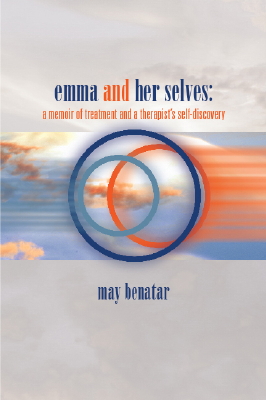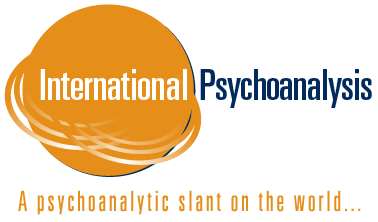 Click Here to Purchase: emma and her selves by May Benatar
Click Here to Purchase: emma and her selves by May Benatar
emma and her selves is the story of a long term psychotherapeutic relationship between a woman with multiple identities, someone diagnosed with Dissociative Identity Disorder. Dr. May Benatar shares some of her own process as a therapist discovering the ubiquity of trauma in both the general population and in clinical populations. As she begins to treat victims of childhood sexual abuse she comes to understand that dissociation and the creation of sequestered part selves are the common consequence of trauma.
Along the way she meets Emma and her many selves and is changed ocer the 20 years of their work together. She learns that “parts” exist in all of us, we all have many faces, many states of mind that are called forth in different circumstance. The difference between Emma and more ordinary folks is the degree of access we have to these states and our ability to integrate them within a whole personality. Dr. Benatar becomes more familiar with her own parts in the process of treating Emma.
There are obstacles and triumphs, mystery and spiritual encounter threaded throughout the narrative.
epigraph:
In the creation myth of mystical Judaism, the world begins with a shattering. The Infinite, in Hebrew Ein Sof, contracted in order to make room for our Universe, for creation. From that contraction came darkness. When Ein Sof declared, “let there be light,” ten holy vessels were created to carry the primordial light to our world. The vessels, unable to contain the perfection of Ein Sof, cracked and the light broke into pieces that scattered throughout the world.
Each human soul, it is said, possesses a sliver, a shard of the light of creation. There is light buried even in the darkest of souls. The purpose of human life is to raise these sparks to the heavens, to unite with other sparks, thus healing the divine Cosmos. Healing is the purpose of life. Uniting the sparks is its goal. The work of our souls is integration.
Rabbi Isaac Luria—the 16th-century Kabbalist and originator of this creation myth—and other Spanish Jews were living in exile in Safed, a town in what is now known as Israel. They had been persecuted and expelled from Spain and Portugal, their communities destroyed. The trauma of the Inquisition was fresh. Luria imagined creation in the form of a shattering and a formula for repair, pointing a way towards survival and reconstitution. The metaphor works perfectly both for the effects of individual and communal trauma and their healing
As a psychotherapist as well as on a personal level as a Jew of the Diaspora, a spark separated from other sparks, I find this creation myth of mystical Judaism deeply appealing. Sometimes my work as a clinician has been to address and literally converse with the splintered parts of an individual’s personality and to guide them toward wholeness, towards integration.
Emma, the young woman whose treatment I unwittingly undertook in 1990 and whose (imperfect) healing took me through almost two decades of my own professional and personal development, needed to unite the shards of her own shattering, the consequence of extreme trauma in and throughout her childhood. That was my work with Emma.
